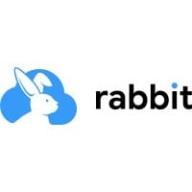

Google Cloud Billing and Rabbit are competing products in cloud infrastructure management. Rabbit has an edge in feature sophistication, while Google Cloud Billing offers a better pricing model.
Features: Google Cloud Billing offers reliable cost management, effective budget tracking, and streamlined financial oversight. Rabbit provides real-time analytics, extensive customization, and comprehensive cloud control.
Ease of Deployment and Customer Service: Google Cloud Billing offers straightforward deployment with thorough integration, making it accessible for quick setup needs. It provides robust customer service focusing on financial consulting and billing support. Rabbit has a highly flexible deployment process with detailed configurations for deep customization. Its customer support is tailored for technical assistance with sophisticated features, ideal for tech-focused organizations.
Pricing and ROI: Google Cloud Billing offers transparent pricing with scalable plans and effective cost management strategies that enhance ROI without steep cost increases. Rabbit involves a higher initial setup cost but delivers impressive ROI by enabling businesses to optimize their cloud operations through advanced features.

Google Cloud's cost management tools provide the visibility, accountability, control, and intelligence you need so that you can scale your business in the cloud with confidence. Tailored to meet the needs of organizations of all sizes, these tools help reduce complexity and increase the predictability of your cloud costs.
Rabbit is designed to efficiently handle asynchronous messaging, facilitating seamless communication between distributed services. Known for its robust performance and scalability, Rabbit is an integral component for organizations that rely on reliable message delivery.
Rabbit provides a reliable solution for managing high-throughput messaging workflows. Its architecture supports different messaging protocols, catering to complex system requirements with ease. While Rabbit is praised for its stability and flexibility, some reviews suggest areas for improvement such as user documentation and the need for more intuitive debugging tools. These insights reflect its adaptability in diverse technological environments.
What are Rabbit's key features?Rabbit fits into industries like finance and telecommunications, meeting specific demands for secure and efficient data transmission. Its deployment is particularly impactful in sectors requiring real-time data processing, ensuring seamless integration with existing infrastructures while providing reliable service operations.
We monitor all Cloud Cost Management reviews to prevent fraudulent reviews and keep review quality high. We do not post reviews by company employees or direct competitors. We validate each review for authenticity via cross-reference with LinkedIn, and personal follow-up with the reviewer when necessary.